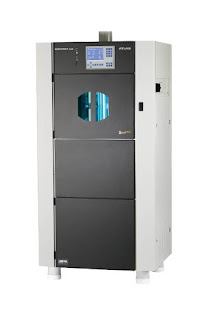The purpose of Color
fastness to light test is to determine how much the color will fade
when exposed to a known light source. It is an off line quality assurance
system. Generally man wears the fabric and goes outside of the home for doing
their job. In day; sun light fall on the fabric surface. So it needs to know
how much protection ability have a fabric to sun light. It is determined by an
experiment called color fastness to light. To measure the color fastness a blue
scale is used. After completing the test, sample is compared with the blue
scale.
Principle of
Color Fastness to Light:
This test measures the resistance to fading of dyed textile when exposed to day light. The test sample is exposed to light for a certain time which is about 24 hours to 72 hours or by customer/buyer demand and compare the change with original unexposed sample the changes are assessed by Blue Scales.
This test measures the resistance to fading of dyed textile when exposed to day light. The test sample is exposed to light for a certain time which is about 24 hours to 72 hours or by customer/buyer demand and compare the change with original unexposed sample the changes are assessed by Blue Scales.
Light Fastness Grades:
Grade
|
Degree of Fading
|
Light Fastness Type
|
8
|
No fading
|
Outstanding
|
7
|
Very slight fading
|
Excellent
|
6
|
Slight fading
|
Very good
|
5
|
Moderate fading
|
Good
|
4
|
Appreciable fading
|
Moderate
|
3
|
Significant fading
|
Fair
|
2
|
Extensive fading
|
Poor
|
1
|
Very extensive fading
|
Very poor
|
Color Fastness to Light with the Microsol
light Fastness Tester:
The testing is
done step by step. Following step is maintained during measure the color
fatness to light.
- Cut the four pieces of test specimens according to the length & width wise and attached with the specimen holder.
- Then the holder set in to the Microsol light fastness tester.
- Then the experiment continued at 72 hours according to the buyer’s requirement.
- After 72 hours later the specimen taken from the light fastness tester
- Then the test specimen compare with the Blue scale or computer color matching system (CCMS).


